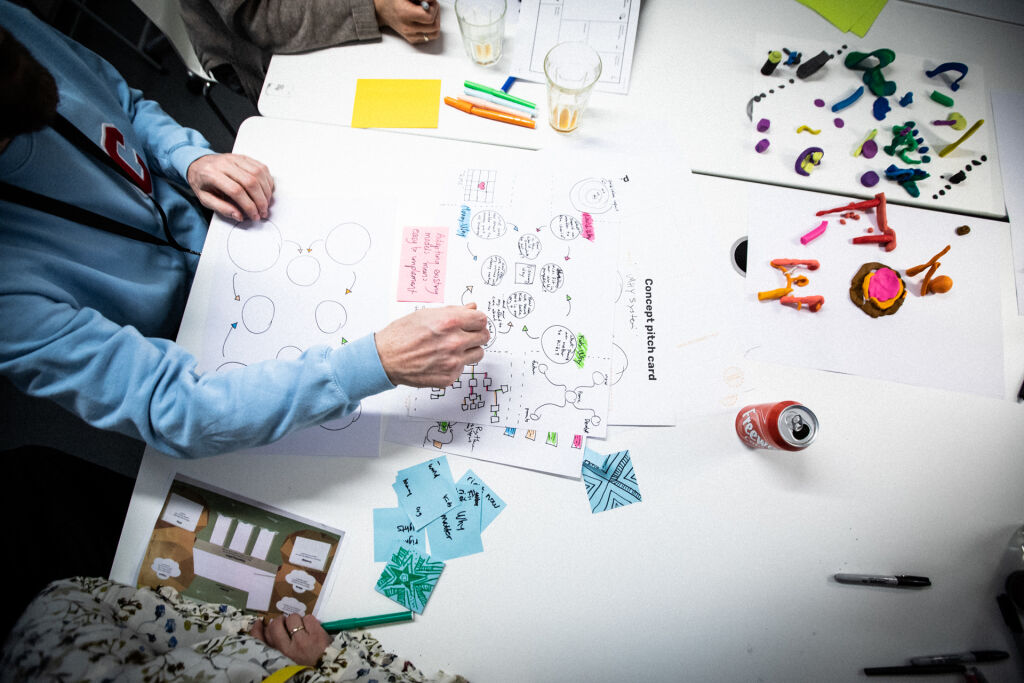Designing better products for children: From rights and principles to practice
How can products and services be designed for children in a way that upholds child rights? How can a rights framework be translated into business practices?


These were the questions that designers, researchers and child rights experts from 14 countries tried to answer over a recent weekend in Copenhagen. The intensive 48-hour co-creation workshop at the end of January was organized by the Designing for Children’s Rights Association and UNICEF and was hosted by strategic design agency Designit.
Why business and design principles
The increasing digitization of society provides children with myriad opportunities to develop, express themselves, enjoy new ways to play, share and communicate, and learn and get support for some of the challenges in their lives.
At the same time, many of the digital applications that children use have not been designed with their safety and development in mind. Children are facing risks that compromise their rights and well-being, such as violation of their privacy and lack of protection of their personal data; excessive use of digital products; and unethical commercial practices that profile and target children.
 Workshop participants being briefed. A range of companies, including LEGO, Ikea and Toca Boca participated. © Rasmus Daniel Taun/Designit
Workshop participants being briefed. A range of companies, including LEGO, Ikea and Toca Boca participated. © Rasmus Daniel Taun/Designit
Since businesses are a major developer of the digital products and services that children use, they have the opportunity – and the great responsibility – to put ethics and children’s best interests at the core of their work. But this does not happen overnight.
Where it all began
The journey started in Helsinki in January 2018. Back then UNICEF Finland and Elisa, a Finnish mobile network operator, hosted a co-creation workshop of over 70 designers, researchers, psychologists and experts on children’s rights to create an open and free Designing for Children’s Rights Guide and set of principles of designing for children with children’s rights and ethics. With these tools and the passion of participants from a range of companies, including LEGO, Ikea and Toca Boca, the Designing for Children’s Rights movement was born
From principles to practice
The original workshop participants felt strongly that there was a need for more action in this space than just a one-off event. A year later, in Copenhagen, the second workshop focused on moving from principles to practice. The event explored how we might get businesses to implement child rights principles in their operations. To set the stage for the weekend, the UNICEF Finland National Committee and UNICEF Policy Lab opened with a presentation on child rights, our work and the big challenges that remain in creating a child-first world.
 A participant sharing her group’s ideas at the workshop which was hosted by strategic design agency DesignIt. © Rasmus Daniel Taun/Designit
A participant sharing her group’s ideas at the workshop which was hosted by strategic design agency DesignIt. © Rasmus Daniel Taun/Designit
We were then split into teams that worked on developing business design tools, value propositions and Key Performance Indicators (KPIs) for why child-rights design makes good business sense, and to find solutions to barriers for creating child-friendly products. The UNICEF team worked hands-on within the small teams to provide expertise on child rights and again gave presentations to inspire and help guide the group’s efforts.
The what: Tools for designers
Firstly, we worked with a group tasked to create actionable, inspirational and easy-to-use design tools for designers of children’s products. After a full day of brainstorming the group came up with over 120 ideas! In the end our lead proposal was to create an online space to showcase resources for designers. These should include case studies of how others have applied the principles, interviews with designers, how-to guides, and even business cases for designing for child rights.
Instead of creating resources ourselves, in another idea our group proposed to gather best practices from around the world. The plan is to invite companies to send their stories – in interview format – of how they designed for children, as a way of sharing the challenges they faced and how they addressed those.
Why not? Lowering the barriers to child rights for designers
We also worked on the challenge of lowering the barriers to integrate child rights considerations in design. The group first identified major barriers, and then chose those that were possible to be addressed in one weekend. Our group had many great ideas, but we eventually decided on working with the two most promising ones: organizing short workshops on design and child rights in different cities in the world, and creating a tool that helps raise awareness of child rights issues among a company’s design team.
Join the growing community
All the workshop results will be uploaded on the association website, and there is a growing community of interested designers who continue the conversation between events.
During 2019 there are also plans to organize smaller gatherings and short workshops in different cities across Europe and the US.
Are you interested in knowing more and getting involved? Subscribe to the newsletter on the association website.
Watch a video of the event made by Designit: https://vimeo.com/319406056
***
Published: 26 February 2019
Headline photo: © Rasmus Daniel Taun/Designit




